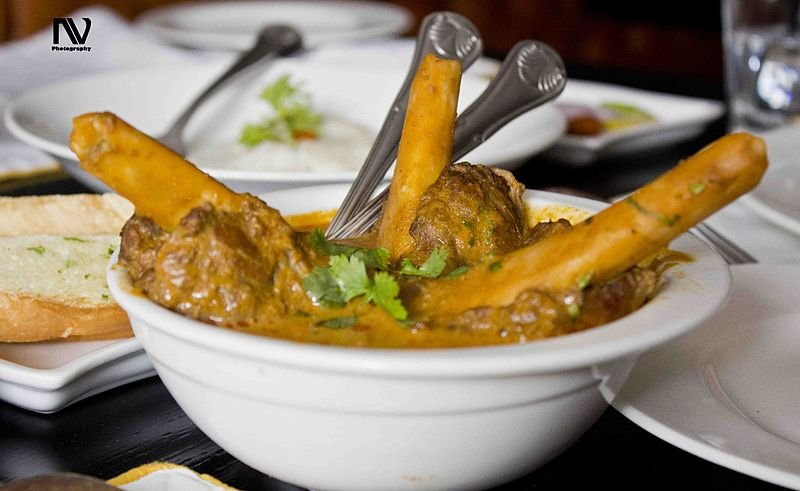Nihari
Nihari, a slow-cooked, flavorful stew originating from the Indian subcontinent, has a timeless and universal appeal that transcends borders and cultures. Nihari is a harmonious blend of robust spices, succulent meat, and slow-cooked goodness. The extensive use of spices like cardamom, cinnamon, cloves, and ginger infuses the dish with a tantalizing aroma and an intricate flavor profile that keeps food enthusiasts returning for more.
Traditionally made with slow-cooked cuts of beef or mutton, the meat in Nihari is cooked to perfection, resulting in a tender, melt-in-the-mouth texture. The long, slow simmering process allows the flavors to penetrate deep into the meat, creating a culinary masterpiece. Nihari is more than just a dish; it's a cultural icon. It is often associated with special occasions, family gatherings, and holiday feasts. Its preparation and consumption are rituals that bring people together, creating a sense of unity and celebration.
It is commonly served with naan or paratha, which helps soak up the flavorful gravy. The dish is often garnished with fresh coriander, green chilies, and a squeeze of lemon, adding layers of freshness and heat to each bite. Nihari's history dates back to the Mughal era, and it has remained an enduring culinary tradition. Its historical significance adds an extra layer of intrigue and charm, making it a dish that connects the present with the past.
Nihari has evolved to cater to diverse tastes and dietary preferences. While the traditional version uses beef or mutton, variations with chicken and even vegetarian options are now available, ensuring that everyone can savor its unique flavors. The appeal of Nihari transcends culinary boundaries and cultural differences















